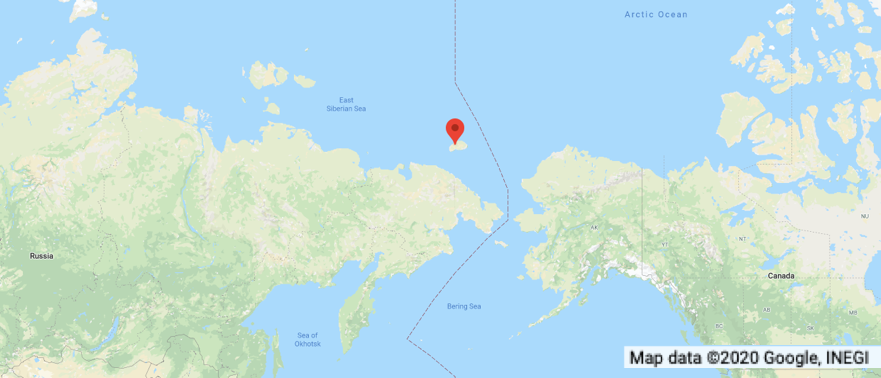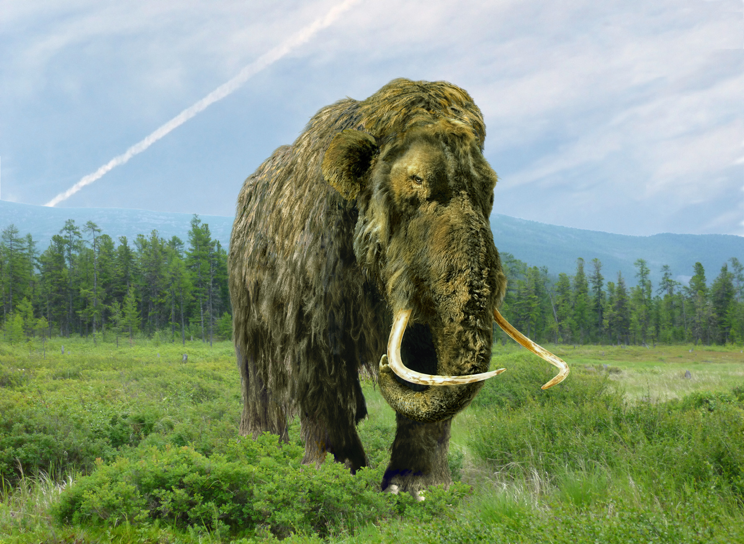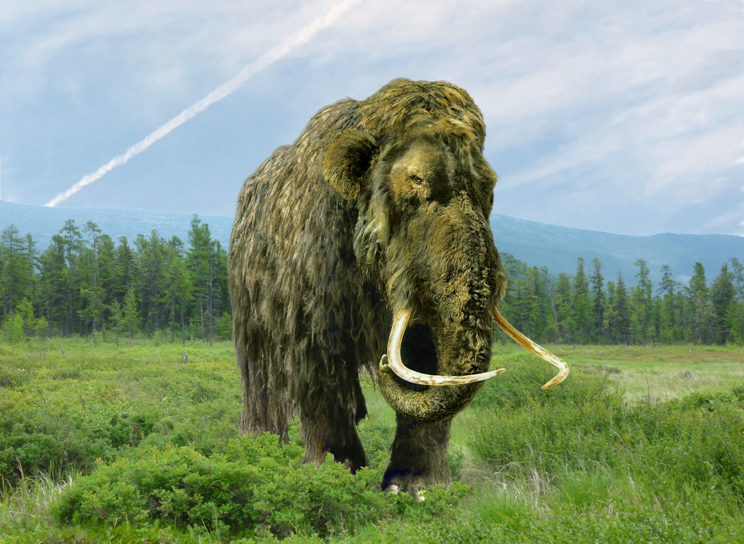By Megan Widdows
During periods of climate change, species have three options: adapt and evolve to survive in the changing environment, move to another area with better conditions or, failing this, die out and become extinct. While adaptation is the most desirable option, it is seldom possible when environmental change happens very rapidly, such as over the span of a single lifetime. This is because evolution is a painstakingly slow process that takes place over the course of many generations.
One of the most extreme periods of climate change came at the end of the Pleistocene period, our most recent Ice Age, around 12,000 years ago. This marked the start of the Holocene period, characterised by significant temperature increases and the melting of thousands of kilometres of ice, causing sea levels to rise considerably.

The rapidly rising temperatures at the start of the Holocene era left the environment unsuitable for many species. The coinciding rising sea levels cut off many areas, creating islands, simultaneously preventing large scale migration. The result was a mass extinction event and the loss of most species that were adapted to the glacial period.
One notable survivor was the Woolly Mammoth. Although the woolly mammoth was able to survive the environmental changes, life would never quite be the same. Small groups of mammoths ended up isolated in small insular populations on the islands that were created when the sea levels rose. The most significant population was on Wrangel Island, off the coast of North East Siberia. This population survived, in isolation, for another 6000 years.

Recently, scientists at the University of Stockholm compared DNA isolated from the Holocene Wrangel woolly mammoth population with that of woolly mammoths of the late Pleistocene period, in order to to clarify how evolution is influenced by two processes: geographical isolation and genetic bottlenecks.
A genetic bottleneck occurs when there is a quick and dramatic reduction in the size of a population, in this case caused by the loss of many woolly mammoths during the mass extinction event at the end of the Pleistocene period. What’s left is a small, random assortment of survivors. Over time, the population size can recover but has lower genetic diversity as all individuals have descended from a small number of founders.
Similarly, founder effects occur when a small group of individuals are permanently separated from the rest of the population. Within the smaller group, there is far less genetic diversity that the population as a whole. Since any resulting descendants can only inherit genes that were present in the founders, they will have limited genetic diversity.
The study found that in the Pleistocene period, before any geographical isolation or extinction events, the woolly mammoth population was highly genetically diverse. This means there were many different alleles, or forms, of different genes, creating lots of variation within the population.
Immediately after the isolation to Wrangel Island, the genetic diversity was reduced to single haplotype, which is a group of genes that are inherited together from a single parent. This finding suggests that the population was most likely founded by a very small number of females, likely just a single matriarchal herd. In this case, the woolly mammoths experienced an extreme population bottleneck and founder effect when they were trapped on Wrangel Island.
They also found that the mutation rate was much higher in the Wrangel Island population than in normal populations, which led to an increase in the number of deleterious mutations. These are mutations that have a negative effect on an organism. In small populations, deleterious mutations are not removed as efficiently as they are in large population, and can instead become fixed. This may be particularly likely for the woolly mammoths of Wrangel Island – it is unlikely that that their population size ever came close to the maximum capacity of the island, meaning there was less competition for survival and all individuals were able to reproduce and pass on deleterious mutations to the next generation.
After 6000 years, all of the Wrangel Island mammoths differed from other mammoths by three distinct mutations. The most evolutionarily important was a non-synonymous mutation in the critically important ATP synthase enzyme. A non-synonymous mutation is a change in DNA that alters the structure of a protein, resulting in a biological change in the organism. ATP synthase is an enzyme that produces ATP, a major energy storage molecule. In humans, this same mutation results in disease, and similar negative outcomes are likely to have occurred in the woolly mammoths.

Despite the small population size of woolly mammoths on Wrangel Island, the scientists believe that fixation of this harmful mutation is actually a consequence of the severe bottleneck and founder effect when they were first segregated from the main population. They believe that mutations arose at the time of the bottleneck, explaining why all descendants of the founding woolly mammoths have inherited these changes.
The findings of this study have improved our understanding of the effects of genetic bottlenecks and limited population sizes, not only in the past but, in species approaching extinction today. It highlights the power a single mutation, arising at an evolutionarily vulnerable moment, can have on the future of a species.
This is especially topical as we face another climate change and extinction crisis. Environments are changing rapidly and more than 160,000 species are listed as endangered by the International Union for Conservation of Nature. Many conservationists are working tirelessly to protect their habitats and increase the numbers of these species. This study helps us to understand the long term genetic impact that bottlenecks may have on species brought back from near-extinction.
The study mentioned in this article can be found here. A glossary of terms can be found below.
Tell us what you think about this blog…
We are trying to understand who reads our blogs and why, to help us improve their content.
By completing this survey, you agree that you are over the age of 18 and that your responses can be used in research at the University of Sheffield to evaluate the effect of blogging in science communication.
Glossary
ATP synthase – an enzyme that creates the crucially important energy storage molecules, adenosine triphosphate (ATP).
Deleterious mutation – a change to DNA that has a negative outcome on the organism, often increasing the susceptibility to disease or disorder.
Founder effect – the reduction in genetic variation that occurs when a small subset of a much larger population is used to form a new colony, and is separated from the old population.
Genetic bottleneck – a rapid reduction in a population size that lasts at least one generation, with fewer individuals there is less genetic variation so the resulting offspring maintain lower genetic diversity.
Geographical isolation – a population of animals, plants or organisms that are separated geographically, preventing breeding between the different populations. This means evolution in each population happens independently.
Haplotype – a set of DNA variations that are usually inherited together on the same chromosome.
Holocene – the current geological period, it began around 11,700 years ago at the end of the Pleistocene period and was associated with the end of the ‘Ice Age’.
Non-synonymous mutation – a change in the base sequence of DNA that means there is a change in the amino acid chain, and ultimately the protein produced.
Pleistocene – the geological period that spanned from 2.6 million years ago to 11,700 years ago, colloquially known as the ‘Ice Age’, succeeded by the Holocene period.
